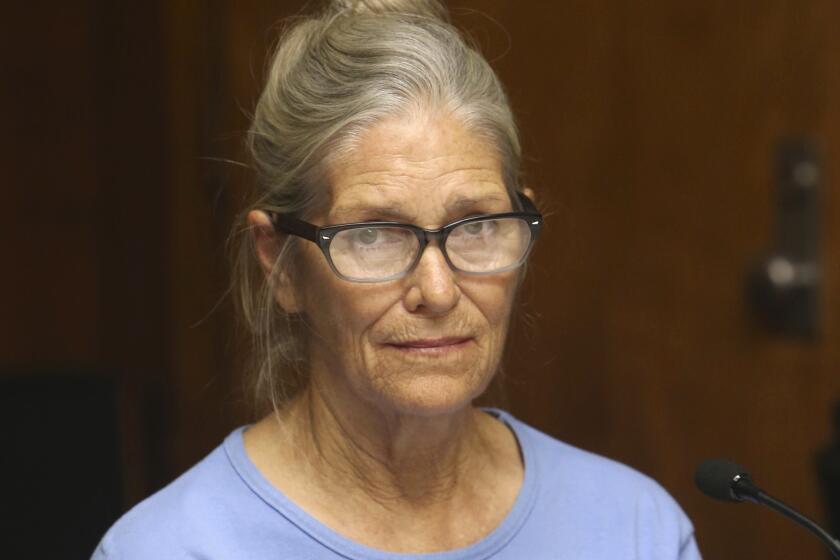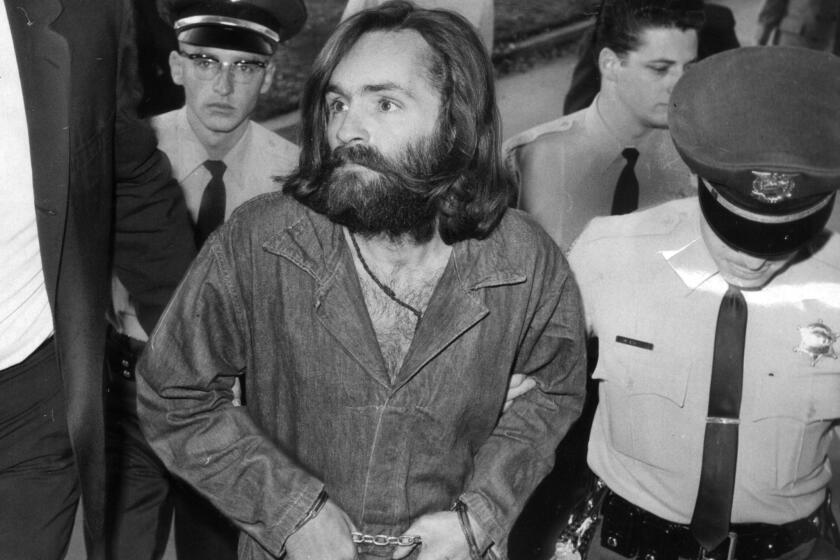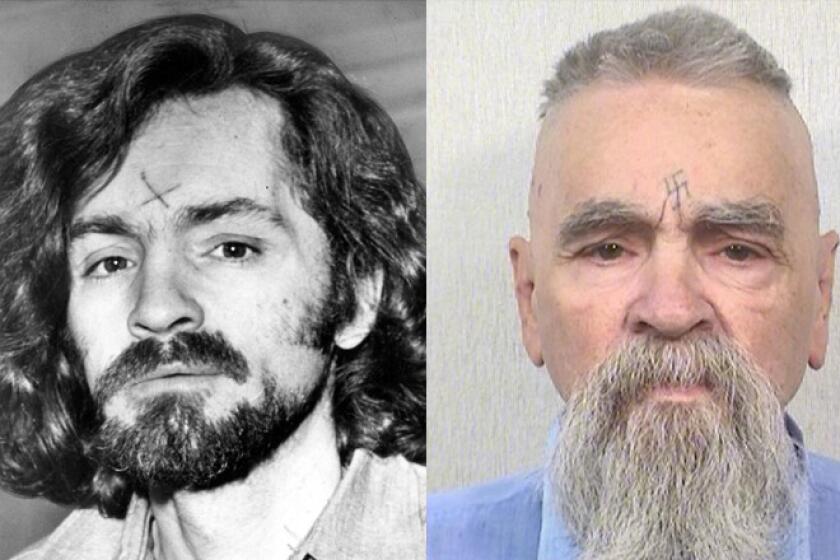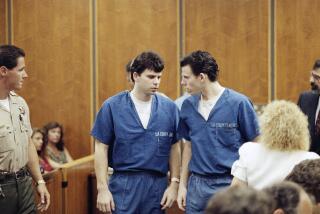Many assumed Manson murderers would never be freed. How Leslie Van Houten did it
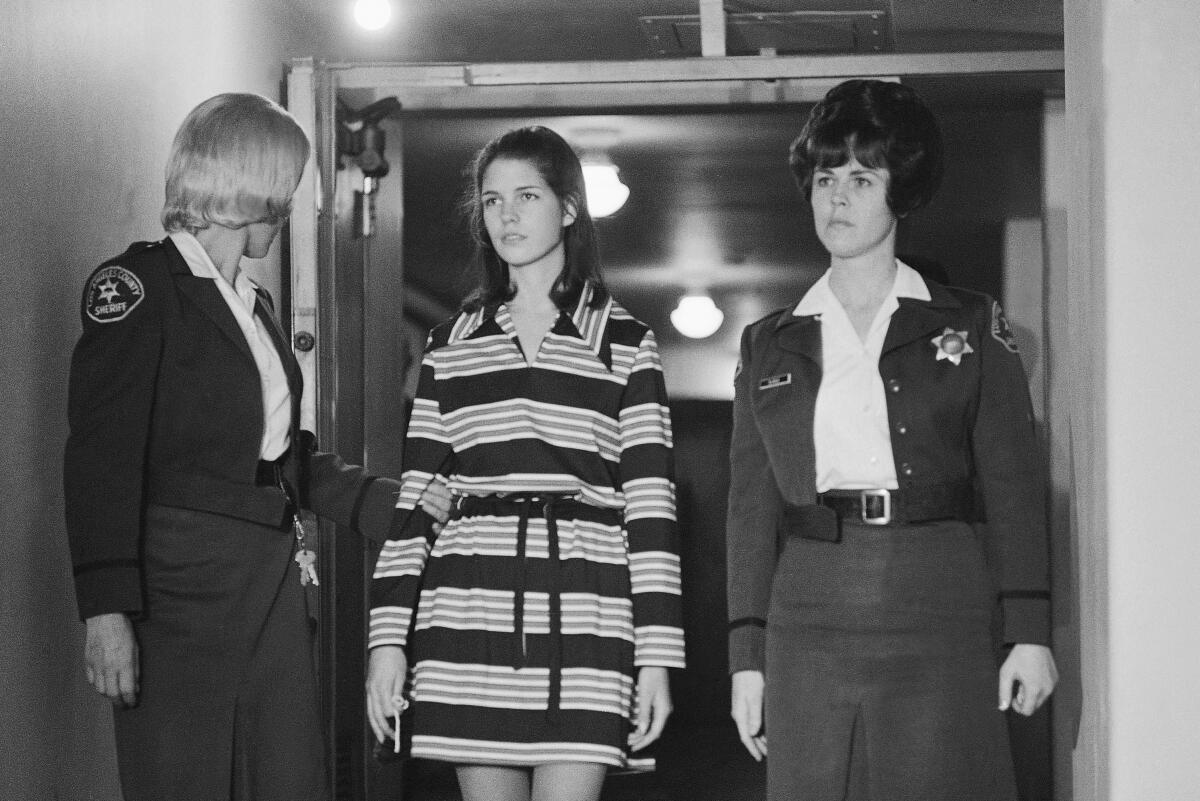
Denied by two governors and forever linked to Charles Manson and his “family,” it seemed unlikely Leslie Van Houten would ever be freed.
But legal experts say an exemplary and “impeccable” record during her more than 50 years behind bars made the legal challenges to her release an uphill fight.
“I don’t think most people thought any member of the Manson family would get out alive,” said Laurie Levenson, a professor of law at Loyola Law School. “The crime was horrific, but I think the governor realized he wasn’t likely to overturn the parole commission and the court of appeals.”
Van Houten was serving a life sentence in the 1969 murders of Leno and Rosemary LaBianca. The California parole board first recommended her release in 2016, and Govs. Gavin Newsom and Jerry Brown had both previously opposed all attempts to free her.
But last week, after an appellate court overruled Newsom’s latest denial of her parole, he said he would not challenge the move.
“The governor is disappointed by the Court of Appeal’s decision to release Ms. Van Houten, but will not pursue further action as efforts to further appeal are unlikely to succeed,” Newsom’s communications director, Erin Mellon, said in a statement Friday.
On Tuesday, the 73-year-old was released to parole supervision, the California Department of Corrections and Rehabilitation said.
Van Houten, 73, was serving a life sentence for her role in the 1969 murders of Leno and Rosemary LaBianca in Los Angeles.
Heidi Rummel, director of the Post-Conviction Justice Project at USC, noted that Van Houten has “had an impeccable record of rehabilitation for many decades.”
Rummel, who has represented candidates for parole for more than 15 years, said clients have cited Van Houten for their focus on rehabilitation during their time behind bars.
But Van Houten’s crimes, seared into American infamy, made her efforts to be paroled difficult. It is rare, Rummel said, for someone who has been denied parole as many times as Van Houten to ultimately be released.
In addition, the gruesome crime for which she was convicted and her constant connection to Manson, one of the most infamous criminals of the 20th century, made her release a political challenge.
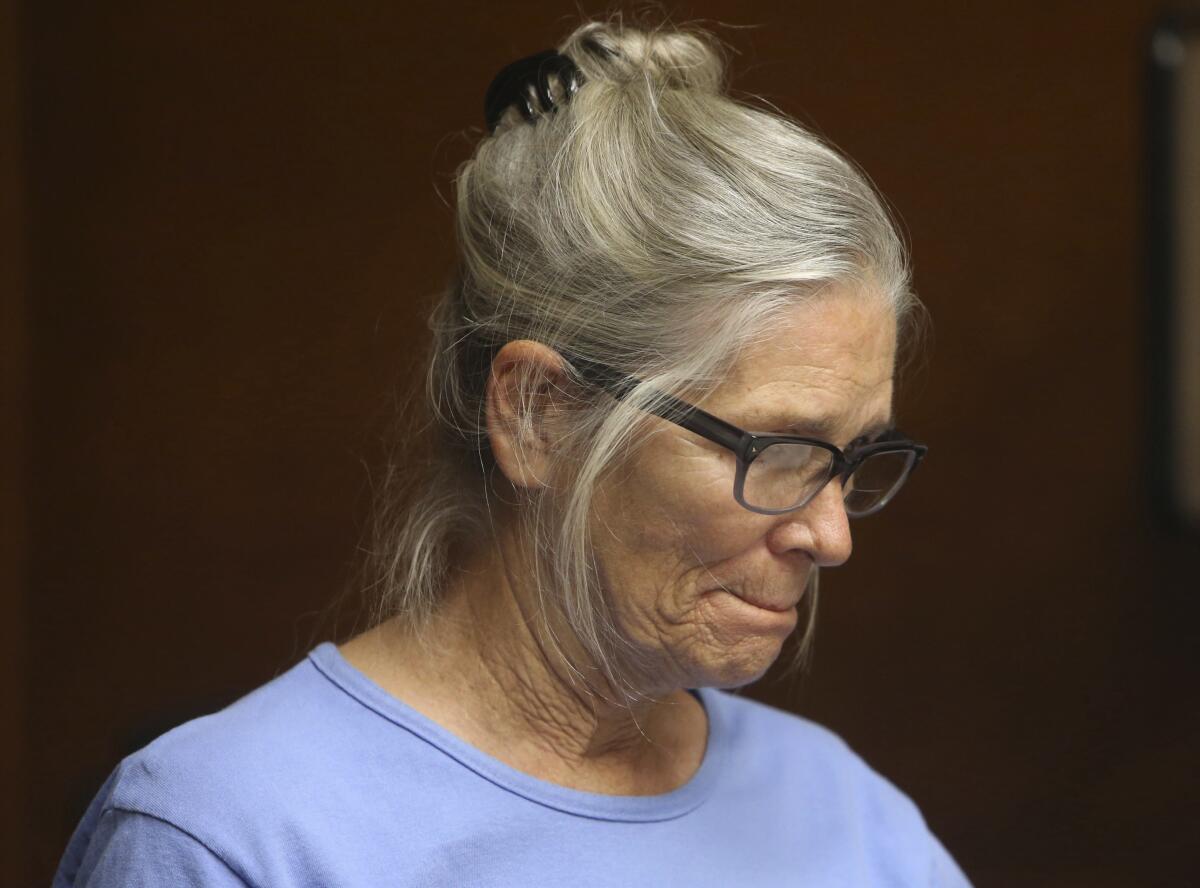
“Politically, this is not something the governor wanted to do,” Levenson said. “But she managed to get out because she managed to become a different person in prison.”
Van Houten became involved with the Manson family in the 1960s. Supporters described her as a misguided teen under the influence of LSD on the night of the killings.
She was involved in the second of the Manson family murders — the killings of LaBianca and his wife at their Los Feliz home.
Read our full coverage of the Manson murders.
Van Houten and another woman held down Rosemary LaBianca as Charles “Tex” Watson stabbed Leno LaBianca. He handed Van Houten a knife after he was finished. She testified to stabbing the woman at least 14 times.
“And I took one of the knives, and Patricia had one — a knife — and we started stabbing and cutting up the lady,” Van Houten testified in 1971. (Patricia Krenwinkel was a co-defendant and another Manson family member.)

The day before the LaBianca murders, Manson followers — including Watson and Krenwinkel — had killed Sharon Tate and her friends Jay Sebring, Abigail Folger and Steven Parent in a brutal attack at a home on Cielo Drive in Benedict Canyon.
The two slayings, commonly referred to as the Tate-LaBianca murders, drew international attention and became inexorably linked to Los Angeles and the late 1960s.
In the summer of 1969, Charles Manson and his murderous “family” went on a rampage in Los Angeles that left nine people dead.
After more than five decades in prison, Van Houten was again on the precipice of parole. After the California appeals court overruled Newsom’s decision to keep her locked up, he could have filed a petition for review to the state Supreme Court, asking for permission to appeal the decision. The Supreme Court then would decide whether or not to take the case, but Rummel said doing so would have been “a shot in the dark.”
“The court of appeal reviewed her record and said there was no basis for the governor to reverse the decision,” Rummel said, adding there was nothing in Van Houten’s record to suggest she still posed a danger to society.
“They look at the crime, but they look at the program, rehabilitation and statistical risk factors,” she said.
Any appeal, Rummel said, would likely not be based on an issue with law, only with the governor’s disagreement with the decision, meaning the state’s Supreme Court would have been unlikely to take up the case.
Still, her release is not likely to have an effect on other members of the Manson family who are still in prison.
“One parole decision has nothing to do with another parole decision,” Rummel said. “It’s really a focus on whether the person presents an unreasonable risk or danger.”
Other former Manson followers will still likely have an extremely tough battle for parole, experts say.
“This case was singed into public memory,” Levenson said. “Helter Skelter is a case on its own.”
Fifty years later, the Manson “family” murders remain seared into the collective memory of Los Angeles. The question, which persists to this day, is why?
Watson, 77, is still in custody at the RJ Donovan Correctional facility in San Diego and was denied parole in 2021.
Krenwinkel, 75, is at the California Institution for Women in Chino. In May 2022, a parole board recommended she be released, but Newsom blocked the effort in October, saying she posed an “unreasonable risk of danger to public safety.”
“For all these years, the focus has been on the crime, not the individual or the inmate,” Levenson said. “I think that’s why people had such little hope that Leslie Van Houten would be released. Recently, there’s been more of a focus on if the individual is a danger to society.”
Anthony DiMaria, the nephew of victim Jay Sebring, had previously spoken at Van Houten’s parole hearings on behalf of the LaBianca family. He told The Times that her release was expected, “but it doesn’t make it any less painful.”
“It doesn’t lessen the blow,” DiMaria said Tuesday. “It’s just as mind-numbing, nauseating, gut-wrenching and painful to think that this release is real.”
But Nancy Tetreault, Van Houten’s attorney, was “thrilled” that her client was “going to be given a chance at freedom.”
“I’m really happy for Leslie because the thing about her is, she entered prison as a 19-year-old young woman who was struggling with a lot of problems in her home life,” Tetreault said. “She got introduced to the Manson cult under the guise that it was a happy, hippie commune, and it turned out so bad for her.”
Times staff writers Christian Martinez, Richard Winton, Summer Lin and Jeremy Childs contributed to this report.
More to Read
Sign up for Essential California
The most important California stories and recommendations in your inbox every morning.
You may occasionally receive promotional content from the Los Angeles Times.
